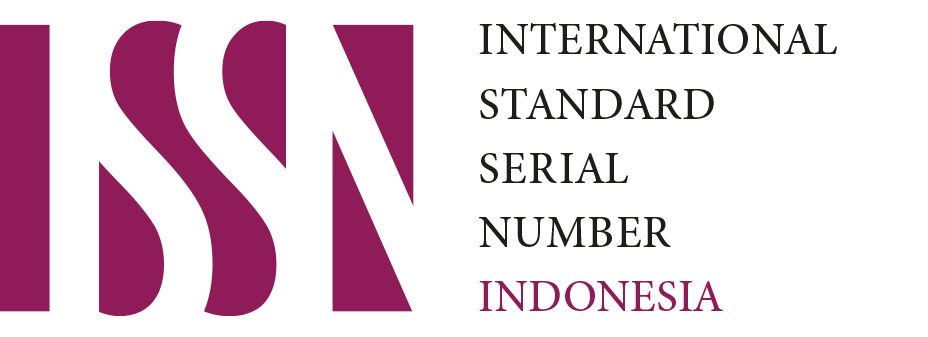Management of Accredited Scientific Education Journals in State Islamic Universities
Downloads
Background of the study: The paradigm shift in the management of scientific journals from print to electronic also has an impact on accreditation policies that were initially oriented towards print scientific periodicals to the accreditation of electronic-based scientific journals.
Purpose: This study aims to identify and explain the traditions and innovations in the management of accredited scientific education journals in PTKIN.
Method: This research is a qualitative research with the type of field research with the orientation of empirical data collection in the field. The researcher directly reviews the documents related to management, and observes the physical / non-physical facilities used in the management of scientific journals.
Findings: The results showed that of the 9 (Nine) accredited education journals of PTKIN before 2018, the most widely cited is Dinamika Ilmu Journal, amounting to 251 (two hundred fifty one) times. This has happened because Dinamika Ilmu Journal has entered the age of 18 (eighteen) years. While the Edukasia Journal is the least quoted, which is 5 (five) times. Even though the age of Edukasia Journal enters the 13th (thirteenth) year.
Conclusion: From the 9 (nine) journals, only the Edukasia Journal still maintains to use the Indonesian full text even though it has been nationally accredited. While Edusains Journal, JPI Journal, Tarbiya Journal, and the Dinamika Ilmu Journal use English full text. This was done in order to support the vision of going international for his journals.
Downloads
Anggoro, M.T. (2007). Metode Penelitian. Jakarta: Universitas Terbuka.
Ansor, S. (2017). Studi Meta Analisis Strategi dan Pemanfaatan Jurnal Elektronik (e - journals) untuk Mahasiswa Lulusan Universitas Negeri Malang dalam Upaya Publikasi Ilmiah Bereputasi Internasional. Record and Library Journal, 3(1).
Arikunto, S. (2006). Prosedur Penelitian: Suatu Pendekatan Praktik. Jakarta: Rineka Cipta.
Arikunto, S. (2010). Prosedur Penelitian: Suatu Pendekatan Praktik. Jakarta: Rineka Cipta.
Creswell, J.W. (1998). Qualitative Inquiry and Research Design: Choosing Among Five Traditions. Thousand Oaks, London dan New Delhi: Sage Publication.
Ditlitabmas. (2014). Pedoman Akreditasi Terbitan Berkala Ilmiah. Jakarta: Direktorat Jenderal Pendidikan Tinggi Kemendikbud RI.
Donim, S. (2002). Menjadi Peneliti Kualitatif. Bandung: Pustaka Setia.
Hariyah. (2016). Tren Penelitian Studi Islam dalam Jurnal Badan Litbang dan Diklat Kemenag RI: Penggunaan Co-Words. Record and Library Journal, 2 (2).
Hariyanto, E. (2016). Qua Vadis The Quality of Online Scientific Journal Publishing in State Islamic Religious University (PTKIN). Khizanah Al-Hikmah, 4 (1).
Kusuma, R.C.D. (2016). Pemanfaatan EZ proxy untuk mengakses jurnal internasional oleh mahasiswa S2 Ilmu Perpustakaan dan Informasi, Universitas Indonesia. Record and Library Journal, 2(1).
Marzuki. (2005). Metodologi Riset. Yogyakarta: Ekonisia.
Meleong, L.J. (2002). Metode Penelitian Kualitatif. Bandung: Remaja Rosda Karya.
Nashihuddin, W., & Aulianto, D.R. (2016). Pengelolaan Terbitan Berkala Ilmiah Sesuai Ketentuan Akreditasi: Upaya Menuju Jurnal Trakreditasi Dan Bereputasi Internasional. Jurnal Pustakawan Indonesia, 15 (1-2).
Nazir, M. (1999). Metode Penelitian. Jakarta: Ghalia Indonesia.
Peraturan Direktur Jenderal Pendidikan Tinggi Kemdikbud RI Nomor 1 tahun 2014 tentang Pedoman Akreditasi Terbitan Berkala Ilmiah.
Permenristekdikti Nomor 20 Tahun 2017 tentang Tunjangan Dosen dan Kehormatan Profesor.
Prastowo, A. (2012). Metode Penelitian Kualitatif dalam Perspektif Rancangan Penelitian. Yogyakarta: Ar- Ruzz Media.
Rahmat, P.S. (2009). Penelitian Kualitatif”. Jurnal Equilibrum, 5 (9).
Rosyada, D. (2015). Persiapan Jurnal-jurnal UIN Jakarta menuju terakreditasi nasional dan terindeks internasional bereputasi. Lokakarya Koordinasi Pengelolaan Jurnal UIN Jakarta.
Sya'ban, A. (2005). Teknik Analisis Data Penelitian. Jakarta: UHAMKA.
Record and Library Journal by Unair is licensed under a Creative Commons Attribution-ShareAlike 4.0 International License.
1. The journal allows the author to hold the copyright of the article without restrictions.
2. The journal allows the author(s) to retain publishing rights without restrictions
3. The legal formal aspect of journal publication accessibility refers to Creative Commons Attribution Share-Alike (CC BY-SA).
4. The Creative Commons Attribution Share-Alike (CC BY-SA) license allows re-distribution and re-use of a licensed work on the conditions that the creator is appropriately credited and that any derivative work is made available under "the same, similar or a compatible license”. Other than the conditions mentioned above, the editorial board is not responsible for copyright violation.


 57201398420
57201398420

























